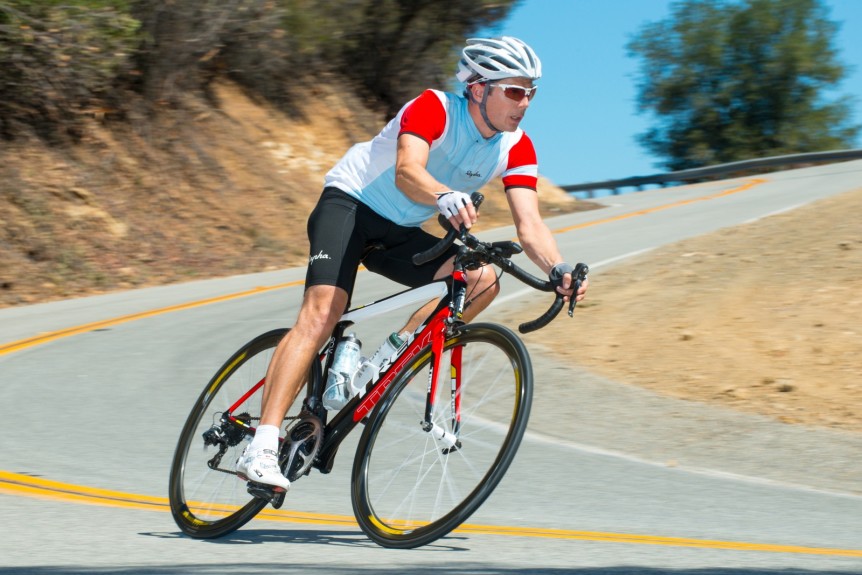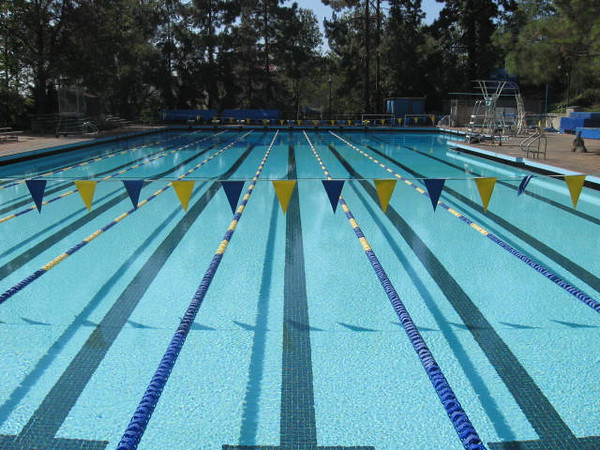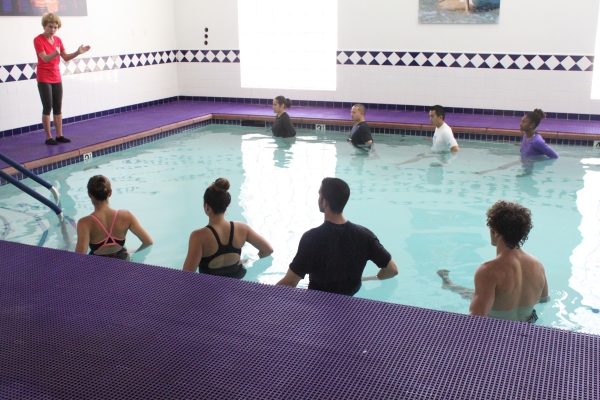Fitness doesn’t come overnight, although it can certainly disappear quickly. Ask any competitive athlete who was injured how soon they felt out of shape and they’ll tell you it happens within days. Research shows a loss of both muscle strength and cardiovascular fitness within a week of becoming inactive! From that, you can see how important it is never to let a full week go by without activity.

James switched from mountain biking to road biking a year ago and is now keeping up with L.A.’s elite bicyclists on the roads.
If this is the year you promised yourself and your friends that you were going to shape up, let me help you figure it out. If you were once in shape and let it all go, at least you can remember some of the joys of feeling strong and agile. Let’s aim back there once again. If you’ve never exercised, I’ll help you find where to start building the foundation of your new fitness lifestyle. Notice I didn’t say fitness program, but lifestyle. That’s where true fitness begins, and the lifestyle makes fitness continue.
Rule #1. Think of what you like to do.
If you don’t enjoy doing it, it won’t become part of your life. Think it through: if you don’t like lifting weights, think of other things. Can you walk comfortably? If you can, walking is the perfect activity with which to start. You can always spice up the walking by going to various places as in #5. Do you swim well enough to turn that into a potential lifestyle? If so, can you gain access to a pool? Do you have a bicycle that could become your new “thing?” Keep thinking. Have you wished you could try yoga or Pilates but never knew where to start? By trying each of them, you might get an inkling that “this is for me.” Or not. Don’t give up until you’ve found something you like. If you were a runner, rower, cyclist or other sports enthusiast, consider if it’s realistic to try to resume those activities. Would you really like doing that again? Are you more of an indoor workout person? Do you enjoy going to the gym, taking classes, seeing lots of other people working out? You may want to seek out the perfect instructor and class that fits your schedule, your temperament, and offers you encouragement along the way.
Rule #2. Ease into it slowly.
The most common reason people give up activity is because they try to do too much too quickly and either get sore, get hurt, or feel let down that they aren’t a superstar on their first day. Be realistic. How long has it been since you were last in any kind of shape? Give yourself a break and figure it might take about that same length of time to really get fit again. If you’ve never been what you would call “in shape,” then you won’t feel so much pressure to excel right away. Still, start slowly. Have good long-range goals, but low immediate goals for the first month. Here are some words that shouldn’t be in your conversation about your workouts for the first month: fast, hard, faster, harder, more, longer. You get the point. The first month you’re just establishing the fact that you ARE going to work out regularly. I’m going to go so far as say that you ARE going to do some small activity every day. That’s the best way to make it a lifestyle, not something that gets pushed out of your way after the first week. Start small, but do at least 10 minutes of something every day. You can find 10 minutes.
Don’t build up your workouts too quickly or you risk undue soreness or even injury. Never add more than 20-30% to your workout at any given time.
Rule #3. Find an alternative activity.
Weather or time restrictions can mean your planned activity simply isn’t possible. If it’s raining or your pool is closed this week, that doesn’t mean it’s OK not to work out. Do SOMETHING each day, even if it’s just 10 minutes of stretching and a few push-ups or abdominal crunches. Go to your local gym or college weight room. Be creative: run up a multi-level indoor parking lot. You can always find something to do even if you’re traveling out of the country in a totally different culture. Skip down the hallways or climb the stairs of your hotel.
If you’re overweight, your three top choices for an injury-free beginning are pool exercise, bicycling, and the elliptical machine. These are the best nurturing exercises that won’t cause trauma to your knees, hips, and back. Live in L.A? We have the most appealing warmer-than-you can imagine pool with a wide variety of pool classes and times. To help you get started, I’m offering 4 FREE CLASSES a week that I’m teaching during the month of January.
Rule #4. Add a trainer or a training partner (two-legged or four-legged)
When someone else is going with you or if you’re meeting someone at the workout location, it’s easier to summon up the strength to go if lethargy sets in. You can’t let them down, so you go. Eventually you’ll feel that same kind of commitment to yourself and your own long-term well-being, but until you get there, you may want to hire a trainer to get you started. These days there are all kinds of private trainers – weight training, running, Pilates, pool, and exercise classes of many varieties. If your budget allows, give yourself one or two days a week of such supervised luxury to boost your ability to become your own trainer on the other days. Or invite a friend to train alongside you. Even if neither of you is expert at the activity, the company, and the “appointment” you set to meet will keep you rolling along.
If you’re an outdoor exerciser, take along your dog or dogs. If you’re walking or running the city streets, they’ll be on-leash to be safe. But if you can easily get to an off-leash hiking trail, set yourselves free and watch them romp! Walking uphill at sunrise watching the pooches scamper around is one of my favorite uplifting exercise routines. Instead of being locked in your own thoughts and keeping your eyes on the trail, look to the horizon as you walk to broaden your point of view.
Rule #5. Go to places that please you.
If you run, hike, or bike, scout out those places with the best terrain, most lovely views, and most pleasant weather. If it’s windy, a canyon may keep you blocked from the wind. If you love looking at the ocean or the mountains, make sure your place to exercise offers you that. If you can have a spectacular pool in which to swim for a few dollars more than your current one that doesn’t draw you in aesthetically, pay those few extra dollars to guarantee your desire to go there.
Rule #6. Find your discipline.
Can you think of an area of your life in which you exert discipline? Do you follow a strict budget and control the family’s spending well? Do you train your animals well and always apply consistent positive control over them? Is your car well-maintained on a regular schedule on which you never falter? You can probably think of another example of your own use of good discipline. Whatever it is, give some thought to how you summon up that discipline. Do you follow a time table, a calendar, or is it automatically in your head? Do you think ahead to the next event even before the current event is completed?
Put forth that same discipline toward building your new fitness lifestyle. Remember, it’s not just a program you’re going to start and (maybe) drop out of within the first month. This is something you are committing to having in your life from now on! By starting small, it will be easier to find those 10 minutes (at least) for exercise every day. Remind yourself to plan for the next day’s exercise while you do today’s. Plan the whole week if you work better that way. Just plan and stick with it.
If you stick with the same time of day, that helps build consistency, and nothing creates a true routine like consistency. Once your body expects to feel the heart pumping, the lungs and muscles working — everything functioning together to generate that Natural High, it will start to demand that you do it again and again!
Rule #7. Don’t let anyone talk you out of your new lifestyle.
People in your life right now know you one way. You’re working to develop another way of living your life. Some of your family or friends won’t like that, because it goes against the routine they have in place themselves. Be prepared to hold your ground. Ignore negative comments and decide to feel better, feel good, feel even GREAT as you get stronger and fitter. No words from anyone else can take away how fabulous it feels to fit nicely into your clothes, move easily through your daily life, and have more energy for everything you do.
Rule #8. Write down your activity.
Some people like getting a new small spiral notebook that will be dedicated strictly to their workout sessions.
Others like to add a line at the bottom of an existing calendar. If you are one of the people who takes pride in looking back at what you’ve accomplished, consider writing down what you do each day. Two or three months from now, when your fitness lifestyle has taken root, you’ll enjoy looking back and comparing what you’re doing at that point with where you started. For years I wrote how many miles I ran, what intervals I sprinted track (6 x 100M, 3 x 200M, etc.) or how many miles I hiked or biked. These days I no longer write anything down. My fitness lifestyle is built in from having two hounds that love to get outdoors and range around. This could be considered an optional point for veterans who just needed to be dusted off and put back on the path. But newcomers to the fitness lifestyle will want to build their confidence by watching their workouts stack up over the weeks and months in writing. It’s not optional for you if you’re just getting started.
Rule #9. Modify your fast-food intake.
Cut down how many of your meals come from fast-food restaurants. If you normally eat each day from such places, cut it back to only a few times a week. It’s hard to maintain enthusiasm for exercise if you’re weighted down by calorie-laden, nutritionally empty meals.
Maybe you haven’t been to a McDonald’s in years. Good for you! Maybe you’ve already found that Carl’s Jr. and In-N-Out Burgers can give you decent chicken sandwiches and burgers wrapped in lettuce and not bread. If you stop at a fast-food place only a few times a month, you’re probably doing OK with a nutritious diet. Eat lots of fresh fruits and vegetables and get enough sleep to feel good in the morning. Feeling fit and good requires at least 7-8 hours of sleep, so organize your life to make that happen.
Rule #10. Remember that it’s all about YOU!
You get to decide what activities you want to do. You get to decide what you eat. Here are two key places where you control what happens to your body. MAKE those decisions; don’t sit idly by while those around you make them all the time for you. Jump up and down if you must, but insist that you are creating a lifestyle for yourself, even if those around you overeat, don’t exercise, and laugh at those who are fit. Nothing is as fabulous as feeling fit and strong. Eating a big dessert lasts for a few minutes, but being able to bike like the wind in the sunshine, or climb up a hill with a breeze on your face will feel like an unbelievable treasure that is all yours. No one else’s. It is YOURS!
Now get going! Stick with these 10 Rules and by March you’ll find yourself already in the swing of something that is guiding you each day. It takes less and less discipline after you build the routine. But you have to START and do something every day.

Lynda competed in track and field in college, played beach volleyball, became a 5K road racer, mountain biker, and yoga advocate, then discovered body boarding and hiking, which are her two current favorite activities.
Lynda Huey, M.S., founder of CompletePT Pool & Land Physical Therapy and Huey’s Athletic Network, is a former athlete and coach whose own injuries led her into the water to find fitness and healing. Lynda is the author of four books on water exercise and water rehabilitation.






